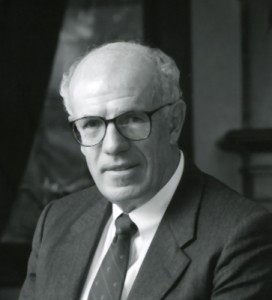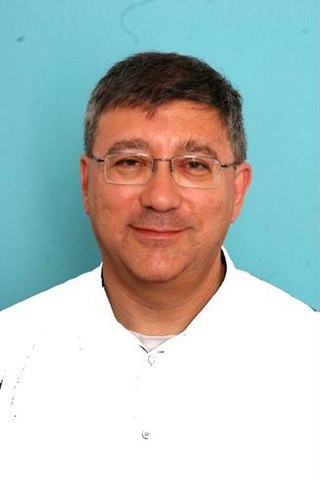
Health informatics is the field of science and engineering that aims at developing methods and technologies for the acquisition, processing, and study of patient data, which can come from different sources and modalities, such as electronic health records, diagnostic test results, medical scans. The health domain provides an extremely wide variety of problems that can be tackled using computational techniques.
MYCIN was an early backward chaining expert system that used artificial intelligence to identify bacteria causing severe infections, such as bacteremia and meningitis, and to recommend antibiotics, with the dosage adjusted for patient's body weight — the name derived from the antibiotics themselves, as many antibiotics have the suffix "-mycin". The Mycin system was also used for the diagnosis of blood clotting diseases. MYCIN was developed over five or six years in the early 1970s at Stanford University. It was written in Lisp as the doctoral dissertation of Edward Shortliffe under the direction of Bruce G. Buchanan, Stanley N. Cohen and others.

Renato Marcos Endrizzi Sabbatini is a retired professor at the Department of Biomedical Engineering and at the State University of Campinas Institute of Biology. He received a B.Sc. in Biomedical Sciences from Medical School of the University of São Paulo and a doctorate in behavioral neuroscience in 1977, followed by postdoctoral work at the Max Planck Institute of Psychiatry's Primate Behavior Department. He founded the Center for Biomedical Informatics, and helped create the Brazilian Society for Health Informatics.
A guideline execution engine is a computer program which can interpret a clinical guideline represented in a computerized format and perform actions towards the user of an electronic medical record.

Alan L. Rector is a Professor of Medical Informatics in the Department of Computer Science at the University of Manchester in the UK.
Vimla Lodhia Patel is a Fijian-born Canadian cognitive psychologist and biomedical informaticist.

Russ Biagio Altman is an American professor of bioengineering, genetics, medicine, and biomedical data science and past chairman of the bioengineering department at Stanford University.

Homer Richards Warner was an American cardiologist who was an early proponent of medical informatics who pioneered many aspects of computer applications to medicine. Author of the book, Computer-Assisted Medical Decision-Making, published in 1979, he served as CIO for the University of Utah Health Sciences Center, as president of the American College of Medical Informatics, and was actively involved with the National Institutes of Health. He was first chair of the Department of Medical Informatics at the University of Utah School of Medicine, the first American medical program to formally offer a degree in medical informatics.
The American Medical Informatics Association (AMIA), is an American non-profit organization dedicated to the development and application of biomedical and health informatics in the support of patient care, teaching, research, and health care administration.
Don E. Detmer is professor emeritus and professor of medical education at the University of Virginia.

Yves A. Lussier is a physician-scientist conducting research in Precision medicine, Translational bioinformatics and Personal Genomics. As a co-founder of Purkinje, he pioneered the commercial use of controlled medical vocabulary organized as directed semantic networks in electronic medical records, as well as Pen computing for clinicians.

The University of Utah School of Medicine is located on the upper campus of the University of Utah in Salt Lake City, Utah. It was founded in 1905 and is currently the only MD-granting medical school in the state of Utah.

Christopher G. Chute is a Bloomberg Distinguished Professor at Johns Hopkins University, physician-scientist and biomedical informatician known for biomedical terminologies and health information technology (IT) standards. He chairs the World Health Organization Revision Steering Group for the revision of the International Classification of Diseases (ICD-11).

Donald Allen Bror Lindberg was the Director of the United States National Library of Medicine from 1984 until his retirement in 2015. He was known for his work in medical computing, especially the development of PubMed. He won the 1997 Morris F. Collen Award from the American College of Medical Informatics.

David Bates is an American-born physician, biomedical informatician, and professor, who is internationally renowned for his work regarding the use of health information technology (HIT) to improve the safety and quality of healthcare, in particular by using clinical decision support. Bates has done work in the area of medication safety. He began by describing the epidemiology of harm caused by medications, first in hospitalized patients and then in other settings such as the home and nursing homes. Subsequently, he demonstrated that by implementing computerized physician order entry (CPOE), medication safety could be dramatically improved in hospitals. This work led the Leapfrog Group to call CPOE one of the four changes that would most improve the safety of U.S. healthcare. It also helped hospitals to justify investing in electronic health records and in particular, CPOE. Throughout his career, Bates has published over 600 peer reviewed articles and is the most cited researcher in the fields of both patient safety and biomedical informatics, with an h-index of 115. In a 2013 analysis published by the European Journal of Clinical Investigation, he ranked among the top 400 living biomedical researchers of any type. He is currently editor of the Journal of Patient Safety.

Yuval Shahar, M.D., Ph.D., is an Israel professor, physician, researcher and computer scientist

Lucila Ohno-Machado is a biomedical engineer and the chair of the Department of Biomedical Informatics and associate dean for informatics and technology at UC San Diego. She is an elected member of the American Society for Clinical Investigation and the National Academy of Medicine.

Dean Forrest Sittig is an American biomedical informatician specializing in clinical informatics. He is a professor in Biomedical Informatics at the University of Texas Health Science Center at Houston and Executive Director of the Clinical Informatics Research Collaborative (CIRCLE). Sittig was elected as a fellow of the American College of Medical Informatics in 1992, the Healthcare Information and Management Systems Society in 2011, and was a founding member of the International Academy of Health Sciences Informatics in 2017. Since 2004, he has worked with Joan S. Ash, a professor at Oregon Health & Science University to interview several Pioneers in Medical Informatics, including G. Octo Barnett, MD, Morris F. Collen, MD, Donald E. Detmer, MD, Donald A. B. Lindberg, MD, Nina W. Matheson, ML, DSc, Clement J. McDonald, MD, and Homer R. Warner, MD, PhD.
Teri E. Klein is an American professor of Biomedical Data Science and Medicine at Stanford University. She is known for her work on pharmacogenomics and computational biology.

Nicholas Tatonetti is an American bioscientist who is Professor of Biomedical Informatics and Chief Officer of Cancer Data Science at the Herbert Irving Comprehensive Cancer Center, Columbia University. His lab develops data mining approaches to understand clinical and molecular data.













